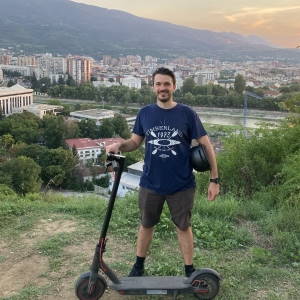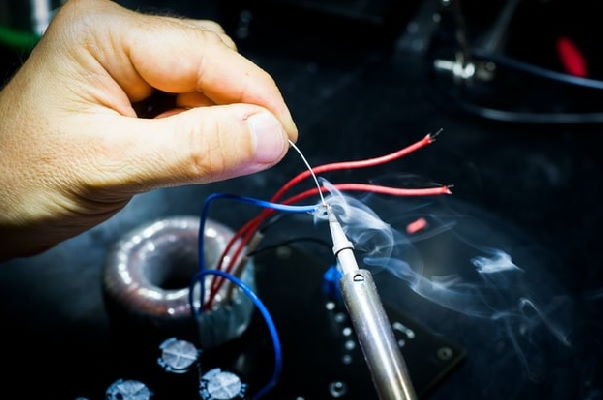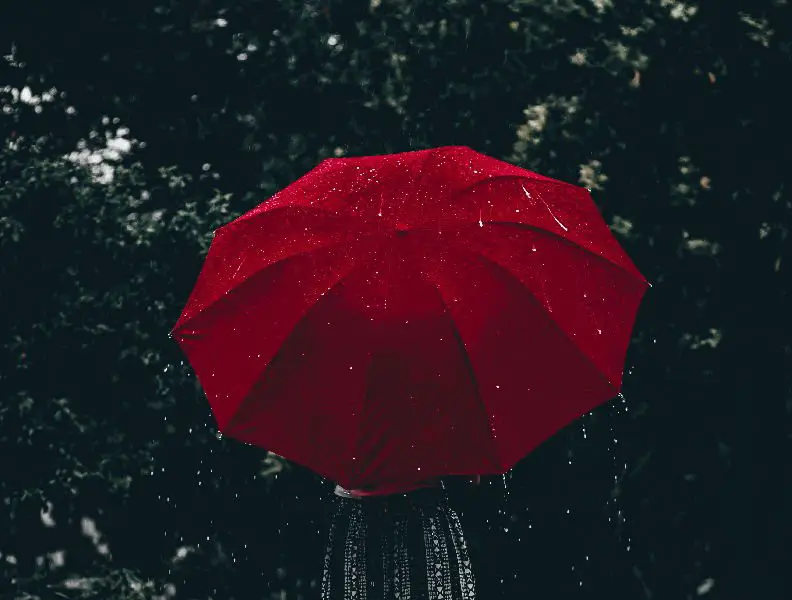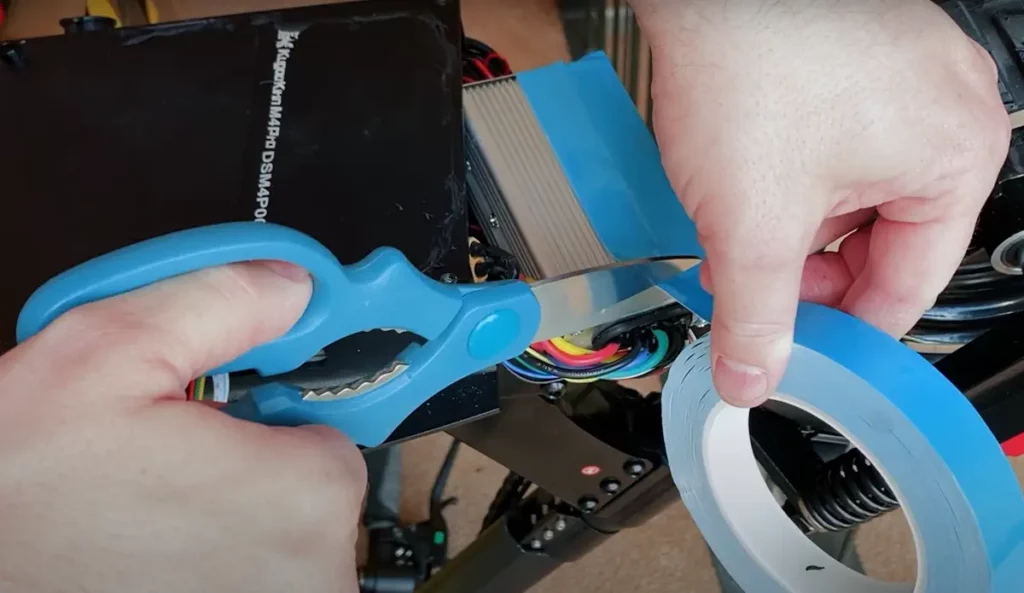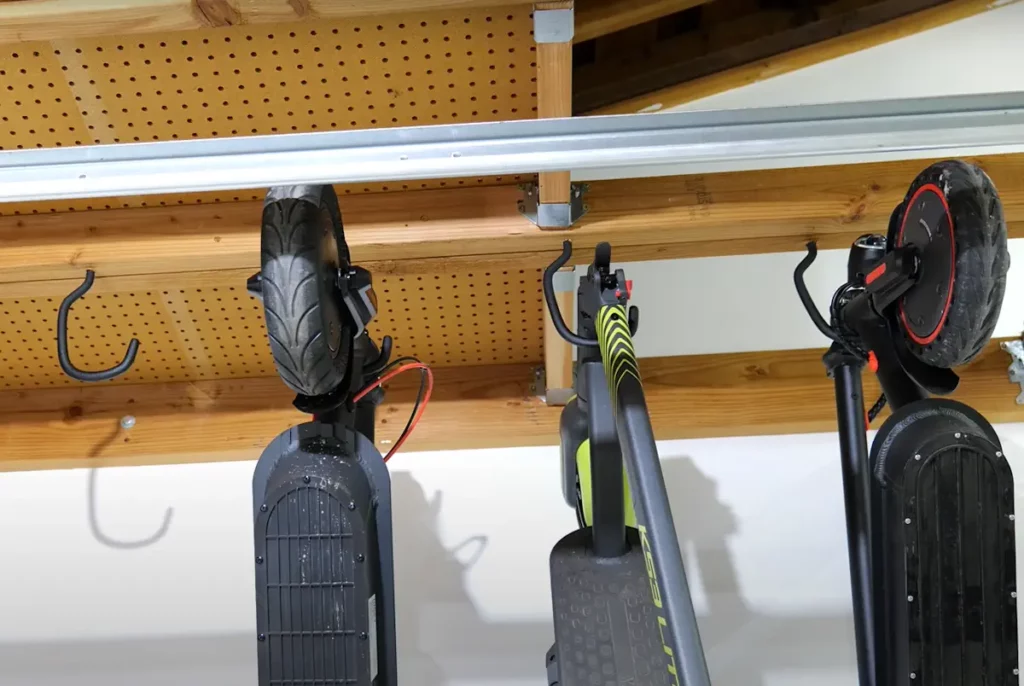I developed my list of electric scooter tips after owning and riding several models over the years. You will not hear these tips often, and even though some of them might be advanced, I consider them great for beginners as well.
 Do a quick check before every rideRisk: freeDifficulty: easyCost: freePrior to each ride, take a moment to ensure your scooter is in good condition. Check tire pressure, brakes, and lights for any issues that might affect your safety.
Do a quick check before every rideRisk: freeDifficulty: easyCost: freePrior to each ride, take a moment to ensure your scooter is in good condition. Check tire pressure, brakes, and lights for any issues that might affect your safety. Wear all the protective gear you haveRisk: freeDifficulty: easyCost: $50-$150Always wear your full set of protective gear, including a helmet, gloves, knee and elbow pads, and appropriate clothing. Safety should be your top priority.
Wear all the protective gear you haveRisk: freeDifficulty: easyCost: $50-$150Always wear your full set of protective gear, including a helmet, gloves, knee and elbow pads, and appropriate clothing. Safety should be your top priority. Keep your back straight and your posture naturalRisk: freeDifficulty: easyCost: free: Keep your back straight and maintain a natural posture while riding to minimize strain on your body and enhance control.
Keep your back straight and your posture naturalRisk: freeDifficulty: easyCost: free: Keep your back straight and maintain a natural posture while riding to minimize strain on your body and enhance control. Use the skateboard stanceRisk: freeDifficulty: easyCost: freeAdopt the skateboard stance with your front foot pointing forward and diagonally, while your back foot points to the side. This stance offers balance and maneuverability.
Use the skateboard stanceRisk: freeDifficulty: easyCost: freeAdopt the skateboard stance with your front foot pointing forward and diagonally, while your back foot points to the side. This stance offers balance and maneuverability.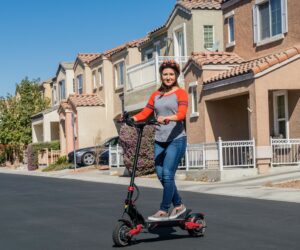 Steer with feet, and entire bodyRisk: freeDifficulty: easyCost: freeControl your scooter by using your feet and shifting your entire body weight. This method provides better stability and control.
Steer with feet, and entire bodyRisk: freeDifficulty: easyCost: freeControl your scooter by using your feet and shifting your entire body weight. This method provides better stability and control.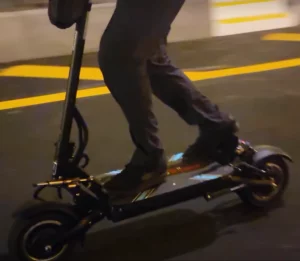 Bend your knees a little for stabilityRisk: freeDifficulty: easyCost: freeSlightly bending your knees helps improve stability, absorb shocks, and maintain balance, especially when navigating uneven terrain.
Bend your knees a little for stabilityRisk: freeDifficulty: easyCost: freeSlightly bending your knees helps improve stability, absorb shocks, and maintain balance, especially when navigating uneven terrain. Learn to “bunnyhop”Risk: freeDifficulty: mediumCost: freeMaster the bunnyhop technique to lift the scooter’s front wheel when encountering obstacles, preventing potential accidents.
Learn to “bunnyhop”Risk: freeDifficulty: mediumCost: freeMaster the bunnyhop technique to lift the scooter’s front wheel when encountering obstacles, preventing potential accidents.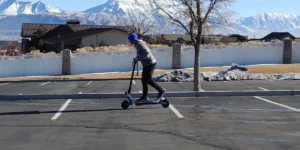 Lean forward during acceleration and climbingRisk: freeDifficulty: easyCost: freeWhen accelerating or going uphill, lean forward to shift your weight and maintain balance, ensuring a smoother ride.
Lean forward during acceleration and climbingRisk: freeDifficulty: easyCost: freeWhen accelerating or going uphill, lean forward to shift your weight and maintain balance, ensuring a smoother ride.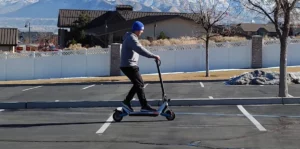 Lean back during braking and going downhillRisk: freeDifficulty: easyCost: freeWhen it’s time to brake or head downhill, lean back to distribute weight, enhancing control and reducing the risk of accidents.
Lean back during braking and going downhillRisk: freeDifficulty: easyCost: freeWhen it’s time to brake or head downhill, lean back to distribute weight, enhancing control and reducing the risk of accidents. Hold the handlebars with a firm gripRisk: freeDifficulty: easyCost: freeHold the handlebars with a firm grip to have better control over your scooter. This will help you maneuver and steer more effectively.
Hold the handlebars with a firm gripRisk: freeDifficulty: easyCost: freeHold the handlebars with a firm grip to have better control over your scooter. This will help you maneuver and steer more effectively.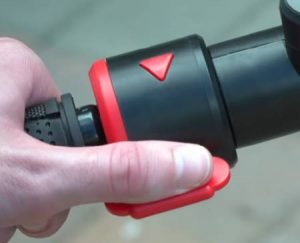 Keep at least one finger on the brake lever and be ready to brakeRisk: freeDifficulty: easyCost: freeAlways keep at least one finger on the brake lever to be prepared to stop quickly in case of unexpected obstacles or situations.
Keep at least one finger on the brake lever and be ready to brakeRisk: freeDifficulty: easyCost: freeAlways keep at least one finger on the brake lever to be prepared to stop quickly in case of unexpected obstacles or situations. Stay focusedRisk: freeDifficulty: mediumCost: freePay close attention to your surroundings and maintain a clear focus on your path. Avoid distractions to react promptly to changing conditions.
Stay focusedRisk: freeDifficulty: mediumCost: freePay close attention to your surroundings and maintain a clear focus on your path. Avoid distractions to react promptly to changing conditions. When riding in wet weather or slippery surfaces, slow down and make yourself “heavier”Risk: mediumDifficulty: mediumCost: freeIn wet weather or on slippery surfaces, slow down and make yourself feel “heavier” by adjusting your body position to improve traction.
When riding in wet weather or slippery surfaces, slow down and make yourself “heavier”Risk: mediumDifficulty: mediumCost: freeIn wet weather or on slippery surfaces, slow down and make yourself feel “heavier” by adjusting your body position to improve traction. Ride defensively and responsiblyRisk: freeDifficulty: easyCost: freeNever ride too fast, especially in crowded areas or on unfamiliar routes. Ride defensively, anticipate potential risks, and obey local traffic laws to ensure safety for yourself and others.
Ride defensively and responsiblyRisk: freeDifficulty: easyCost: freeNever ride too fast, especially in crowded areas or on unfamiliar routes. Ride defensively, anticipate potential risks, and obey local traffic laws to ensure safety for yourself and others.
Let’s go over each one of them in more detail.
Do a quick check before every ride
Check if:
- your battery is full enough for where you want to go
- your brakes work
- your tires are inflated
- all the lights on your scooter are working
That’s a very simple routine of just 4 steps, done in about 20 seconds, and it can prevent both accidents and you getting a ticket.
Wear all the protective gear you have

I’ve never fallen from my scooter, and I’ve never really had an accident.
However, I have a few friends that have had several accidents.
One of them collided with a bicycle once and fell because of a pothole the second time. His first accident was not that serious and he didn’t have any injuries, but the second time he hit his head on a big concrete flowerpot on the sidewalk. His helmet took most of the blow and had a crack in it. In his own words: “If I didn’t wear a helmet, I would have had a concussion at least!”.
Always wear a helmet, that is non-negotiable! Wear as much other protective gear as you can.
Check out the full electric scooter safety guide to find out how to always avoid injuries and accidents, or the helmet guide to see how to pick the perfect helmet for your needs and budget.
Keep your back straight, and your posture natural

Maintaining good posture while riding your scooter is essential, especially if you struggle with back pain like me. Prolonged rides can sometimes lead to back discomfort or other health risks.
To prevent this, stand up straight from the waist and stay relaxed. Find a balanced position on your scooter deck, not too far from the handlebar, and not too close.
Keeping a natural posture will reduce strain on your back and make your ride more comfortable.
Use the skateboard stance
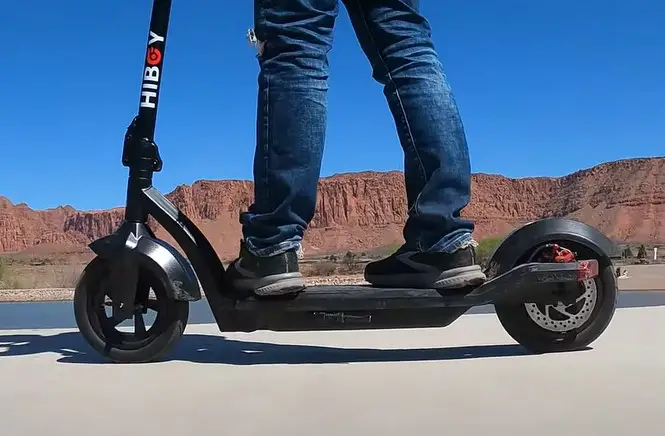
If you’re right-handed, your right foot will be on the front, pointing to the front and maybe slightly to the left. Your left foot will be on the back, pointing either completely to the left or a bit diagonally to the left. This is also known as the “skateboard” or the “surfboard” stance, and it’s the optimal way to control your scooter with minimal effort.
The distance between your feet will depend on the length of the deck, but it will usually be around shoulder width.
If you are left-handed, well… you will be swimming against the current here, but I guess you’re already used to that, living in a world made for right-handed people. Still, you may be in luck, as some models do come ready-made for left-handed people, with the throttle on the left and the brakes on the right.
Steer with your feet (and your entire body)
While the main job of steering belongs to the handlebar, you should include your feet as an additional way to change directions easily.
Simply use your feet to transfer some of your weight and move your center of gravity in the direction you want to turn. Don’t just stop at the feet – gently and slowly move your entire body along with your feet. This will do wonders for your balance and make turning much more intuitive and embedded in your body.
Check this video to see what it looks like.
Bend your knees a little for stability
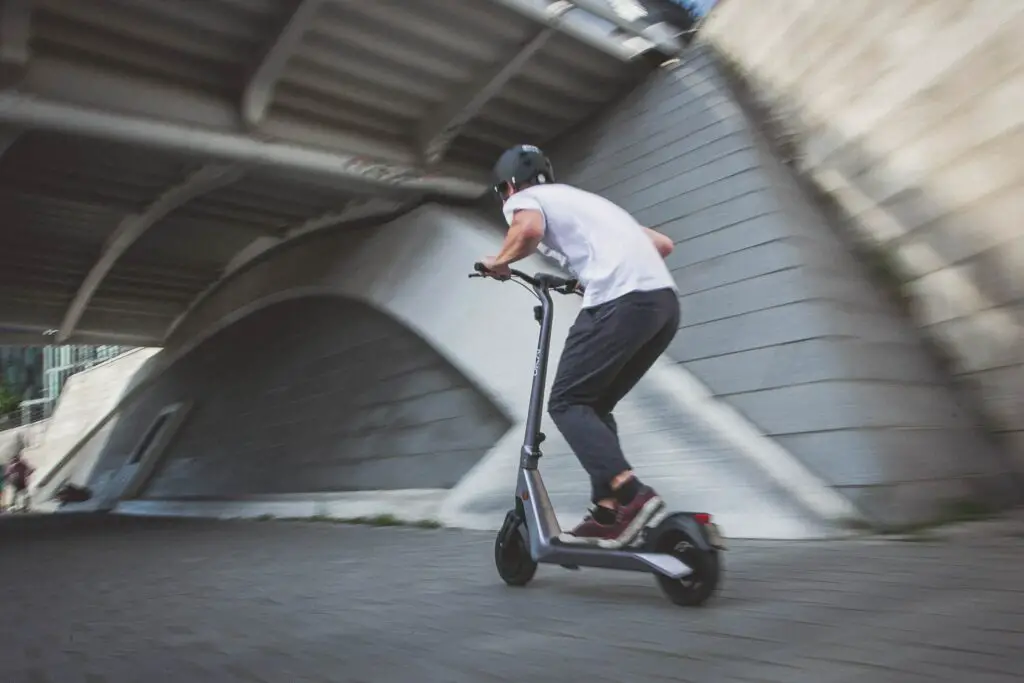
This is one of the most advanced tips on how to use an electric scooter.
While you want to keep your back straight, you shouldn’t lock your knees and keep your legs straight. That will be very unnatural and make riding very difficult.
Bending your legs at the knees slightly not only makes the rides more comfortable but also does a great job of acting as an additional suspension system when you cross over bumps or holes.
Speaking of bumps…
Learn to “bunnyhop”

This technique is used for crossing bumps, potholes, cracks in the road, off-road riding, or anything that will disturb the steadiness of your ride.
It involves bending your knees even further and reducing the pressure your feet and your whole body put on the deck of the scooter. It’s literally like trying to make your body lighter during the bump.
Your body elevates, sort of doing like a very light hop during the crossing of the bump (hence the name “bunnyhopping”). That way, while crossing a bump, your scooter only has to support its weight, and not be burdened by your weight in addition.
The joints in your legs, together with the muscles in your legs and your entire body, further act as a suspension system, but they only absorb a fraction of the impact you would absorb with your feet firmly planted on the deck.
All in all, a very cool and useful trick, start practicing it on your rides and you will notice much smoother rides.
Lean forward during acceleration and climbing

When accelerating or climbing, your scooter expends the most energy and the systems are under the most pressure.
If you lean forward a bit, you will make its job a lot easier as you will transfer your center of gravity to where the scooter is headed. This way you save your battery and every other scooter system.
Lean back during braking and going downhill
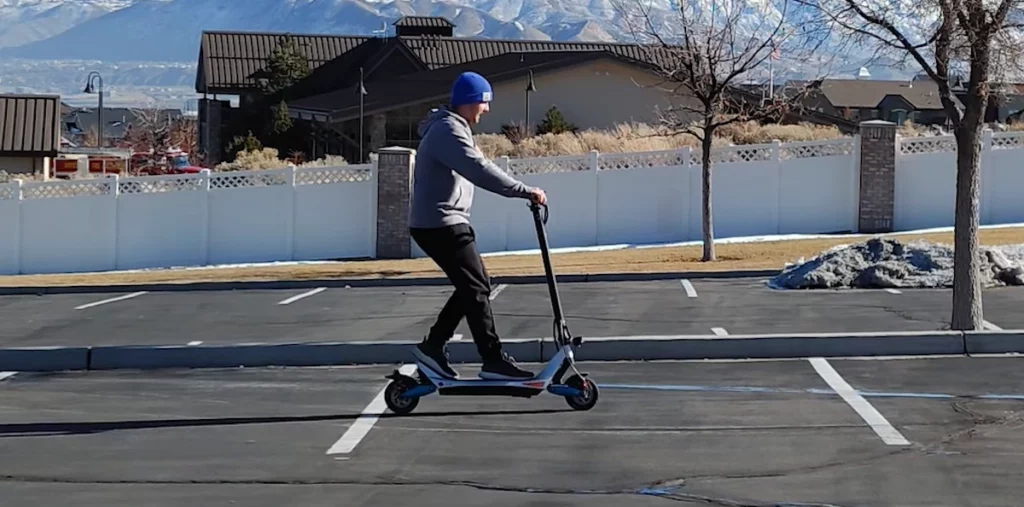
The proper braking technique for electric scooters involves leaning back a bit. The reason for this is two-fold:
- transferring your center of gravity to the back will help your scooter brake more easily
- the brakes are often at the front, and leaning back prevents the rear wheel from going airborne and the scooter from tipping over entirely
The same principles apply to riding downhill. You will probably (I hope) not accelerate when going downhill, and you will likely break a bit. Leaning back slows you down, and also prevents tipping over, which is much easier when going downhill.
Hold the handlebars with a firm grip

As a beginner, you might grip the handlebars super tight due to fear of falling. It’s normal, but with experience, you’ll find a balance. You don’t need a death grip, just avoid letting go completely while riding.
But as you gain more experience, you will feel more confident and realize that you don’t need to use that much force. You can’t ride with a very loose grip as that makes you lose too much control, but you will learn how to lighten up a bit.
Never let go of the handle while riding though, that is a big mistake that will result in you on the floor.
Keep at least one finger on the brake lever
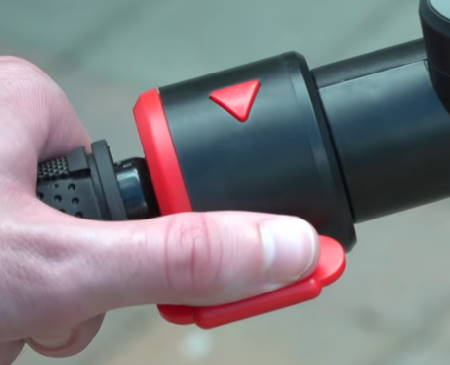
Strange things happen when riding an electric scooter.
Elderly pedestrians, bicycles, dogs, and obstacles can pop up.
To stay prepared, I keep one or two fingers on the brake lever. It helps me react quickly without sacrificing control, even though full braking might be a bit harder.
If you often need to brake hard, it’s best to hold the handlebar for maximum control and use all your fingers on the brake lever when necessary.
Stay focused

This sounds simple, but it’s aimed more at experienced riders.
Electric scooter rides can be such a joy, that we often forget we are participating in traffic, where serious or even fatal accidents can happen in the blink of an eye.
Newbies are too afraid of falling, making a mistake, or embarrassing themselves, so they will probably ride with 100% of their attention.
But more experienced riders may get so relaxed over time, and forget that they are going at speeds that are not harmless.
This has happened many times to me. I just enjoy the ride so much that I completely get in the zone and stop worrying about the world around me. Luckily, I’ve managed to react in time so far, but I’ve had a few close ones already.
If you ride in wet weather or slippery surfaces, slow down and make yourself “heavier”

First of all, riding during rain, snow, or other wet conditions is strongly discouraged, both by most scooter owners and scooter manufacturers. Even if you have a waterproof scooter that is immune to water damage, the risk of slipping, falling, and hurting yourself is too big.
Still, I’ve lost count of the number of times when I’ve had no better alternative than ride in the rain. Sometimes you simply have to do it.
When riding in the rain or the snow, or on wet, muddy, or slippery surfaces, slow down!
The faster you go, the more you increase your chances of falling. Check out my guide on waterproofing your electric scooter if you often have to do this, too.
Also, remember how we described making yourself “lighter” when going over bumps? Well, do the opposite when riding on slippery surfaces.
Apply a bit of extra pressure with your feet and your entire body on the scooter’s deck. Bend your knees a bit more, and let your body push down on the scooter. That will lower your scooter’s center of gravity and give it more stability.
Ride defensively and responsibly

I get it. You’ve been eagerly waiting for your scooter, and the temptation to push it to the max when it arrives is real.
While it’s okay to test its speed, especially in safe conditions, I advise against regularly riding faster than 18 mph / 30 kmh, especially in traffic. Going faster can be risky for you and others.
I learned this the hard way when I got a ticket for forgetting to stop at a red light while riding in the car lane in my second month of scooter ownership.
Respect your local traffic laws when riding your scooter. This usually means:
- make sure your scooter is working properly, in many countries you can get a ticket for a malfunctioning scooter
- ride in lanes designated for electric scooters, or at least for bikes
- don’t ride under the influence of drugs or alcohol, both for legal and safety reasons
- respect the speed limit for electric scooters or other rideables
- park your scooter only where it’s allowed to park it
- always ride with your lights on, especially during night rides
- add a rear-view mirror to your scooter if it doesn’t have one
Conclusion
Remind yourself of these essential riding tips listed in the table below and ensure you incorporate them into your rides.
- Do a quick check before every ride
- Wear all the protective gear you have
- Keep your back straight and your posture natural
- Use the skateboard stance
- Steer with feet, and entire body
- Bend your knees a little for stability
- Learn to “bunnyhop”
- Lean forward during acceleration and climbing
- Lean back during braking and going downhill
- Hold the handlebars with a firm grip
- Keep at least one finger on the brake lever and be ready to brake
- Stay focused
- When riding in wet weather or slippery surfaces, slow down and make yourself “heavier”
- Ride defensively and responsibly
